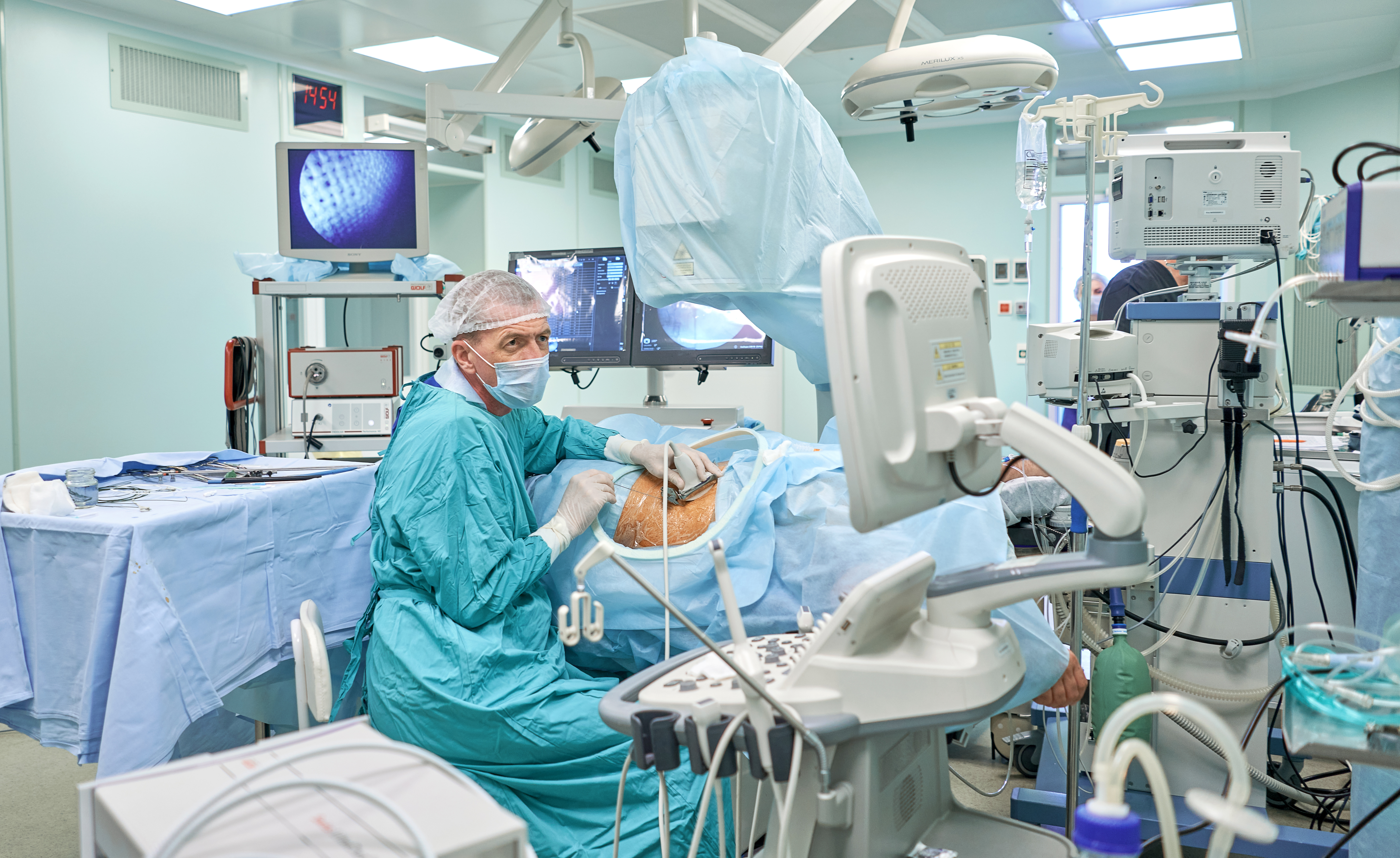A Method for Controlling Suction and Specimen Collection During Endoscopic Procedures
A method to precisely control the amount of pressure applied by the fluid flow from the lithotripsy device with a stopcock.
In percutaneous nephrolithotomy, the urologist inserts a needle into the kidney, dilating a tract into which a sheath is inserted. Fluid irrigation and lithotripsy are then used to break up and retrieve kidney stones into a vial, via the sheath.
The devices used for this purpose have channels through which suction is applied from an external source to remove the stones; however, they do not have a method for modulating that suction. Instead, someone in the OR has to clamp or bend the suction tubing in order to slow or release the flow.
This is awkward, imprecise and frustrating; too much suction can lead to loss of visualization and air bubbles inside the body; too little suction can also reduce visualization due to the buildup of particles and/or stone fragments in the tubing. These particles and/or fragments sometimes stick to the inside of the suction tubing; they are difficult to remove and this gums up the works, limiting the effectiveness of the suction device.
A SUNY Upstate Medical University team has created a method for reducing pressure buildup in the pelvis during endoscopic procedures. First, the researchers determined the optimal shape of a ureteroscope for reducing intrapelvic pressure. Next, they found that by offsetting the endoscope to the side of the access sheath, which contains the endoscope, they could substantially improve fluid outflow and reduce pressure. Finally, the team determined that this displacement could be achieved by adding small, radially emanating projections within the working channel of the scope. They concluded that any endoscope or catheter could be adapted with these projections and that the methods could also be used with bronchoscopes to reduce the disruption in air flow.

Makes endoscopy safer for patients.
Reduces pressure that can cause infection, injury, and pain.
Modifications can be used to adapt any endoscope or catheter
Reduces pressure buildup during endoscopic procedures.
Patent application submitted
Provisional patent
This technology is available for licensing.
Patent Information:
| App Type |
Country |
Serial No. |
Patent No. |
Patent Status |
File Date |
Issued Date |
Expire Date |
|